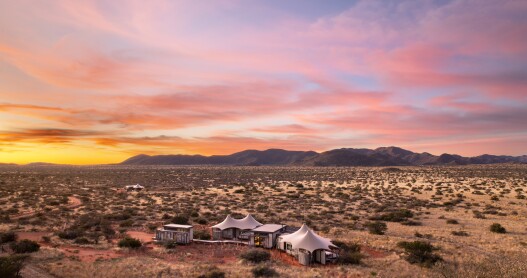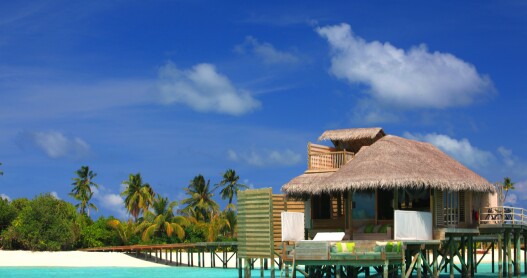Overview
When’s the best time to go to Tanzania?
The equatorial location lends Tanzania a temperate climate throughout the year. Seasons are dry, then rainy—the former (January to March and June to September) being the best for game viewing, with fewer mosquitoes and better accessibility on the roads. The rainy season is great for getting deals on accommodations. Some lodges close during the heaviest rains in April and May. The Serengeti’s visitation peaks during migration season, when over two million animals travel north from the Serengeti to the Maasai Mara, between June and October. This is high season, and lodges and flights are booked well in advance. Generally, northern circuit parks can be visited year-round, although southern and western circuit parks are best visited during dry season. Tarangire, while on the northern circuit, has much better game viewing during dry season. The coastal areas of Tanzania and Zanzibar are warm any time of the year, making them ideal for beach holidays.
How to get around Tanzania
To enter the country, most tourists require a visa, usually valid for three months; this is easily obtained at the airport or border point of entry. Some nationalities may be required to get one in advance, so check before traveling. International flights arrive daily into Kilimanjaro International Airport (Arusha), and Julius Nyerere International Airport (Dar Es Salaam). Domestic flights are plentiful, allowing access to even the most remote of lodges, especially during the rainy season when national parks can become inaccessible by road. In fact, many lodges have their own local or private airstrip. If arriving from Kenya, the main highway from Nairobi to Arusha via the border town of Namanga is a well maintained route. The highways connecting Arusha, Ngorongoro, Serengeti, Kilimanjaro, and Dar Es Salaam are also good. Many buses operate over the borders between Kenya, Malawi, Uganda, and Zambia.
Tour operators offer a driver and guide to navigate the roads and national parks by vehicle. Alternatively, buses and Matatus (small minibuses) are an excellent way to get around, though you should not travel at night. Domestic flights and airlines are plentiful. Many lodges and hotels have a local airstrip, and some upscale retreats have their own private airfield. The Tazara Railway operates several routes from Dar Es Salaam to Kapiri Moshi in Zambia and is a fantastic off-the-beaten-path experience, winding its way through villages and national parks. Expect delays; this is for those who are not in a hurry. It is probably one of the best ways to see Tanzania.
Food and drink to try in Tanzania
In addition to the European fare served at popular resorts and lodges, many different regional specialties are on offer. Mainland traditional dishes include nyama choma (barbecued meat), kachumbari (spicy tomato relish), mishkaki (beef kebabs), meat stew, potatoes, and ugali (a type of maize meal porridge). Indian curries are widely available due to the large population of second-generation immigrants from India. The coastal areas offer excellent seafood and Swahili-style curries like mchuzi wa kamba (prawn curry with tomatoes), all delicately flavored with locally grown spices and coconut milk. Tropical fruit is abundant throughout Tanzania. Take your pick from sweet coconuts, pawpaws, pineapples, bananas, and mangoes. Head to Dar Es Salaam for a more cosmopolitan choice of restaurants including Ethiopian, Moroccan, Thai, and Chinese. Arusha also offers international cuisine due to the large expatriate community residing there. Try the locally produced Safari lager or have a tipple of Konyagi, a gin-style spirit.
Culture in Tanzania
Tanzania’s public holidays are generally related to its wrestle with independence. Saba Saba Day (July 7) celebrates the founding of the Tanganyika African National Union; Nyerere Day (Oct 14) honors the country’s first president; Independence Day (Dec 9) commemorates independence from Great Britain in 1961; and Zanzibar Revolution Anniversary (Jan 12) remembers the day in 1964 when the Sultan of Zanzibar was overthrown.
Zanzibar is arguably the festival hub of Tanzania, hosting the Sauti Za Busara traditional music festival (February), the massive Dhow Countries & Zanzibar International Film Festival (July), and the Mwaka Kogwa New Year festival, to name but a few. Kilimanjaro hosts a marathon every February or March that draws thousands of people from around the world. And Bagamoyo Arts Festival lasts for a week in September and features exotic, acrobatic displays and exhibitions.
Local travel tips for Tanzania
Enriched with the diverse cultures, languages, and beliefs of more than 120 ethnic groups—from the ochre-painted Maasai Warriors and the mystical, forest-dwelling and solitary Ha to the coffee-trading Haya along the shores of Lake Victoria—Tanzania has remained harmonious partly because nearly everyone speaks Swahili in addition to their native tongue. Primary schooling in Tanzania is in Swahili, though secondary schooling switches to English. Tanzania’s currency is the Tanzania shilling, but U.S. dollars are widely accepted for tourist services and at international hotels. Tanzanians are generally a very peaceful, laid-back people, made up of Christians, Muslims, Hindus, and some remaining tribal cultures. Sunday is still a day when most shops close early regardless of the area’s religion.
Guide Editor
Harriet Constable is a freelance journalist specialising in travel, conservation, and development. She writes for the The Times, Financial Times, NPR, Wanderlust, SUITCASE Magazine, and more. She also co-authored the updated Rough Guide to Kenya. Currently based in Nairobi, her travels have taken her to every continent on earth.
Kerry John-Davis currently living in East Africa, Kerry has a penchant for far-flung places. Having many fingers in the tourism industry pie means she now is able to share her pick of the best experiences off the well-trodden tourist circuit. She also has a terrible habit of buying Volkswagen Kombi’s and storing them in her garage.













